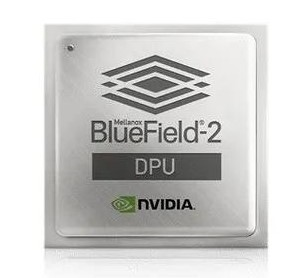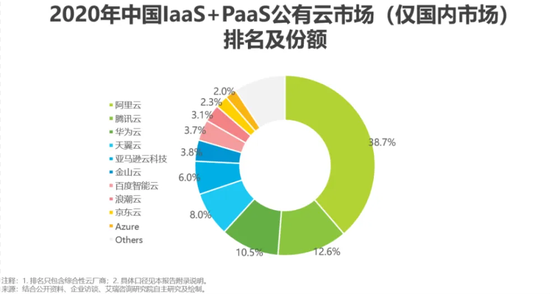Welcome to follow the WeChat subscription account of "Sina Technology": techsina
Wen/Li Xia
Source: Bohu Finance (ID: bohuFN)
Look at the "cloud" next door and change the senior executives, one is working on government affairs, and the other is preparing to be the smartest cloud. Tencent, as always, kept a low profile and quietly did the most familiar things.
On May 11, a semiconductor company named Yunbao Intelligent changed its industrial and commercial information and added some venture capital institutions, including Guangxi Tencent Venture Capital Co., Ltd., which invested about 120000 yuan, accounting for 0.92% of the shares.
Although Guangxi Tencent Venture Capital Investment has little money, as early as April one year ago, another Shenzhen Tencent Information Technology Co., Ltd. gave the semiconductor company 2.33 million yuan, accounting for 29% of the shares, becoming the largest shareholder, and added about 760000 yuan five months later.
So why did Tencent pursue this semiconductor company? What does this have to do with cloud computing?
Use 7.2 minutes to bet on DPU
Yunbao Intelligence, founded in Nanshan District, Shenzhen in 2020, was founded by Xiao Qiyang, a doctor of electronic engineering at Stanford University. During his doctoral studies, he studied artificial intelligence and neural networks, and as an associate professor of MIT, he studied networks and distributed computing.
In 2002, Xiao Qiyang founded chip company RMI in Silicon Valley, which is used in routers, wireless base stations, security devices and smart network cards. In 2009, RMI was acquired by NetLogic, a listed company. In 2011, Xiao Qiyang facilitated the acquisition of NetLogic by Broadcom, a world chip giant, and became the general manager of Broadcom's processor and wireless infrastructure business division in Greater China. Until his resignation in 2015, Xiao Qiyang sought his own entrepreneurial direction.
A year before Xiao Qiyang left Broadcom, Ma Yun on the other side made a judgment: the world is moving from the IT era to the Data technology era, and data will become the lifeblood of the DT era. It is obvious that after the popularization of smart phones, the amount of data of all kinds of images and videos is exploding. Taobao may be the first group to feel it on the Internet.
However, in 2020, with the outbreak of the epidemic, companies around the world will feel the pressure of this data volume. In August this year, Xiao Qiyang finally found his own entrepreneurial direction: DPU chip, and then set up Yunbao Intelligence.
DPU (Data Processing Unit) is the data processing unit. It is called the third important computing chip in the data center scene after CPU and GPU. Some people even think that future servers can have fewer GPU, but not DPU. To understand this, we should also start with the CPU.
Based on the Von Neumann architecture design, CPU not only undertakes computing functions, but also basic functions such as storage, network, security, etc. This behavior of sharing rain and dew has led to the core capacity of CPU computing being consumed by other basic functions. According to Huang Renxun, CEO of Nvidia, it is between 20% and 30%.
So later, GPU (Graphic Processing Unit) liberated CPU from graphics processing, and its functions became more and more powerful (3D processing). Similar to the mobile phone industry, the ISP image chip launched by mobile phone manufacturers this year recently.
Compared with the "single-minded" GPU, DPU has a lot of fraternity. As you can see from the name, the "data processing unit" will assume the functions of the data center, including network, storage, security, etc. Its goal is to make the CPU become dedicated - do "math" well.
Coincidentally, two months after the establishment of Yunbao Intelligent, Nvidia launched a new processor named DPU at the GTC conference in the autumn of 2020, and formulated a related development plan. At the 2021 GTC Conference, Nvidia announced the "three core" strategy of "GPU+CPU+DPU".
 (BlueField-2 DPU image source: network)
(BlueField-2 DPU image source: network) Although clouded leopard intelligence encountered a powerful opponent when it was born, on the other hand, Nvidia also exposed the DPU to capital. Four months after its establishment, Yunbao Smart got the Angel Wheel. In April 2021, it got financing from Tencent and Sequoia, and the business once again interpreted Lei Jun's wisdom.
If Sequoia is rushing to the wind, Shenzhen Tencent Information Technology Co., Ltd. is "malicious" in terms of name and shareholding.
Tianyan search shows that the company is wholly-owned by Tencent Technology (Shenzhen) and currently holds about 24% of the shares of Yunbao Intelligent, which is the largest shareholder. The company's business scope also looks very simple and comfortable: network, information technology services, technology research and development, consulting, etc.
At this time, a smart judge asked why Tencent invested in a semiconductor company? Is it not risky to make chips?
First of all, Tencent currently has a total bet of only 3 million yuan. Even if it loses the bet, it will not hurt. It will earn back in about 7.2 minutes (Tencent's daily net profit will be 600 million in 2021).
What if you win the bet?
DPU has a wide range of application scenarios, including data center and cloud computing, network security, high-performance computing and AI, communication and edge computing, streaming media, etc. For the moment, data center and cloud computing are one of the main application directions of DPU.
The introduction page of Yunbao Intelligent's official website shows that "Yunbao Intelligent is a company that focuses on Cloud computing and data center data processor Chip (DPU) and solutions 's lead Semiconductor companies. ”
Solving problems such as computing power and storage is the original goal of DPU, but it is also the purpose of cloud computing.
Smart network card or DPU?
In September 2021, Beijing held the China Smart Network Card Seminar. In addition to chip manufacturers, network card suppliers and operators, several cloud manufacturers also came.
Ren Kai, the head of Tencent cloud smart network card research and development, said that in 2020, Tencent will research and develop the first generation of self-developed smart network card "metasequoia", the second generation of silver fir is expected to be released at the end of 2021, and the third generation of smart network card is still in the project construction stage, and is expected to be launched in 2023.
At the Tencent Digital Ecology Conference two months later, Tencent released three chips, namely AI reasoning chip "Zixiao", video transcoding chip "Canghai" and smart network card chip "Xuanling".
Among them, Xuanling is used to speed up the performance of virtual machines, realizing zero occupation of the main CPU. According to Qiu Yuepeng, president of Tencent Cloud, Xuanling's product performance has improved four times compared with that of the industry.
It can be seen that although it is called smart network card (Smart NIC, which has existed since the last century), it is the same as DPU in terms of purpose and function. DPU is Nvidia's Mellanox based Smart NIC name, which adds some new functions.
However, Zhang Xiantao, technical director of Alibaba Cloud virtualization, disagrees with this view: In terms of architecture, the DPU architecture is to insert a server into the DPU, and the smart network card architecture is to insert a network card into the server.
After understanding this, I can probably understand why Nvidia has initiated a DPU craze after it proposed DPU.
At present, there are only two truly large-scale commercial DPU architectures in the world: Amazon AWS and Alibaba Cloud.
In April 2017, with the expansion of cloud computing business scale, the problem of resource contention and computing power loss became more and more prominent. As a result, X-Dragon came into being, and through virtualization to achieve the purpose of transferring basic functions such as CPU storage and network. Soon, Alibaba Cloud took Tmall's Double 11 as a testing ground and successfully operated it. Later, SAIC became the first test customer of DPCA architecture. In 2019, all Alibaba's businesses will be moved to DPCA.
In terms of liberating CPU computing power, JD Cloud takes a similar step to Alibaba Cloud. In February 2021, JD Cloud officially released its self-developed virtualization architecture "Jinggang". It is reported that Jinggang architecture has been successfully applied to business scenarios such as Jingdong Double 11, Jingdong Health Vaccine Reservation and Nucleic Acid Testing, and successfully overcame the peak performance bottleneck.
And the new member of cloud computing, Byte Beat, who just joined last year, soon announced that it would develop its own DPU and plan to provide external services through volcanic engine cloud products.
So, what's the difference between the smart network card developed for so many years and the mature DPU? How many foam components does the DPU chip at the initial stage have, and how many technical problems will it face in the future? None of this is known. But for a new concept, especially one launched by a world technology giant, the best way is to follow the note.
This is what Tencent and Baidu are doing. In February this year, Baidu's wholly-owned affiliated company strategically invested in a DPU chip R&D company founded in 2021 Xingyun Zhilian (Zhuhai), undisclosed amount.
 (Source: Tianyan Search)
(Source: Tianyan Search) However, it should be noted that after Nvidia launched the concept of DPU and became popular through its successful kinship with CPU and GPU, it has attracted a large number of DPU start-ups, some of which have patched "smart network cards" under the banner of DPU (Alibaba Cloud Zhang Xiantao said).
Qualifying competition of cloud computing
Since Tencent announced its cloud service revenue of 17 billion yuan in 2019, it has no longer separately announced its cloud service revenue in its annual report for the past two years. In 2021, the total revenue of cloud services incorporated into Fintech and enterprise services will be 172.2 billion, an increase of 31%.
According to the data from some research institutions, Tencent Cloud's market share in the domestic "IaaS+PaaS" public cloud market in 2020 was 12.6%, ranking second, 2.1% higher than Huawei Cloud, the third (iResearch).
 (Data of iResearch)
(Data of iResearch) By the first half of 2021, Tencent Cloud will have 11.2% of the domestic "IaaS+PaaS" public cloud market share, higher than Huawei Cloud 0.3%, Ranked second (IDC); In Q3 2021, the market share of the same category will be 10.9%, higher than that of Huawei Cloud 0.2%, Ranked second (IDC).
Although it is also the second place in domestic cloud computing, the gap between it and the third place is gradually narrowing.
In addition, according to the data of China Commerce Industry Research Institute, in 2021, the market share of Tencent Cloud will be 16%, which will be exceeded by Huawei Cloud (18%).
Although the above data sources are different and the specific statistical methods are unknown, the overall trend can be seen.
With its first mover advantage, Alibaba Cloud will occupy the first place in domestic cloud computing for several years, and no one can shake it for the time being. The ranking will change dramatically on those subjects with small market share gap, such as the current situation of Tencent Cloud and Huawei Cloud.
It is obvious that Huawei's market share has been increasing slowly in the past few years by virtue of its advantages in the government cloud. The game, live broadcast and other Internet ecosystems that Tencent Cloud relies on are currently experiencing a cold winter in the industry.
With the growth of the Internet industry at its peak, more and more enterprises are swarming into cloud computing, encroaching on this 100 billion market. The technology update represented by DPU is a potential opportunity or risk for the future development of cloud computing enterprises, and the qualifying race of cloud computing is under way.
(Statement: This article only represents the author's view, not Sina.com's position.)









